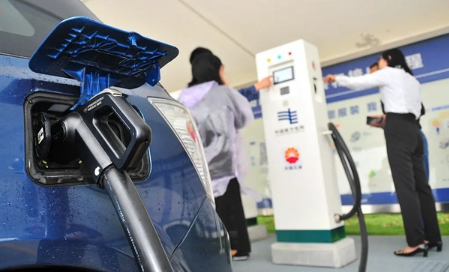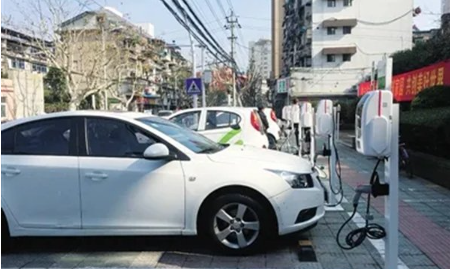
Fast charging and slow charging differ in several key aspects including charging time, connector type, charging station size, and charging power. Let’s delve into these distinctions:
1. Charging Time
The most noticeable difference is the charging time. Slow charging uses low-power AC electricity, resulting in longer charging periods, typically taking 6-8 hours to fully charge a small vehicle. In contrast, fast charging employs high-power DC electricity, significantly reducing the charging time, often recharging up to 80% of the battery in just 30 minutes.

2. Charging Connector Type
Slow chargers utilize AC charging ports, which usually feature 7-pin connectors. Fast chargers, on the other hand, use DC charging ports that typically have 9-pin connectors.
3. Charging Station Size
Fast charging stations incorporate converters to handle the high power directly within the station, making them larger compared to slow charging stations. Slow chargers rely on the vehicle's rectifier for current conversion, which allows the stations to be smaller.

4. Charging Power
Fast chargers deliver higher voltage and current compared to slow chargers, resulting in greater overall power. You can identify fast and slow charging stations by examining the power ratings indicated on their labels.
In summary, both fast and slow charging methods cater to the varying needs of EV users. However, to prolong battery life, it is generally recommended to opt for slow charging whenever possible.
Why Does Slow Charging Offer Better Range than Fast Charging?
Slow charging often provides about 15%-20% more range compared to fast charging. This is primarily due to the phenomenon of "phantom charge" that can occur with fast charging. The high current associated with fast charging can raise the battery's internal temperature, leading to incomplete chemical reactions within the battery cells. This creates an illusion of a fully charged battery when, in reality, the charge is less than indicated.
Slow charging mitigates this issue by using a low current, allowing ample time for the battery's chemical reactions to complete thoroughly. This ensures that the battery absorbs the maximum possible charge, resulting in a higher actual charge level and extended range.
By understanding these differences, EV owners can make informed decisions about their charging habits to maximize both convenience and battery longevity.



SHENZHEN DMIC CO.LTD
Office Add:No.1408, Building 8, Qianhai Kexing Science Park, Xixiang Street Baoan District, Shenzhen China(518102)
Blog
sitemap
Privacy Policy
XML
© 2025 Shenzhen DMIC Co.,LTD. All Rights Reserved .  network supported
network supported